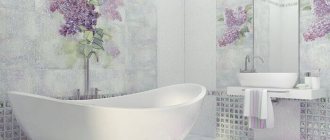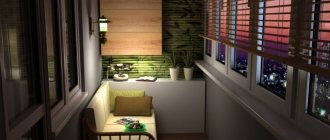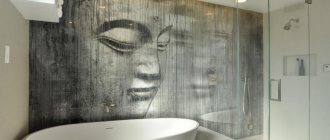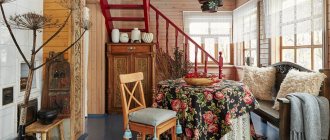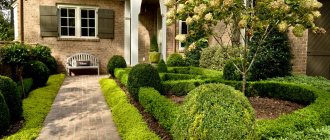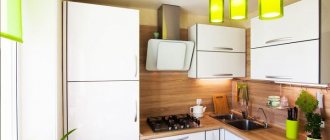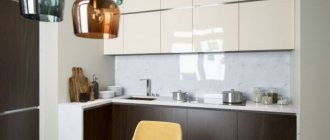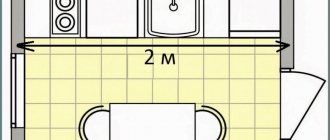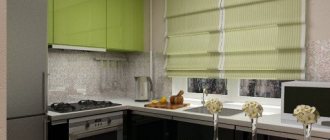Click to share
more
How can we design a small toilet design? The toilet is one of the most important rooms in an apartment or house, and it defines us as civilized people. It is important that the toilet is functional and comfortable, as well as clean and hygienic. There are many things to consider when designing a toilet. So how to choose a small toilet design and arrange it correctly? How to choose furniture, decoration and accessories? What else is important to remember? About this in our article.
Here we will look at all the elements that should be considered when designing a small toilet.
Layout of a small bathroom
When buying an apartment, it is important to think through the design of each room so as not to think about renovations for the next 5-10 years. The bathroom especially needs careful planning, because all communications will need to be adjusted to it. But what about very small rooms where it seems impossible to turn around? Let's take a closer look at what options there may be in a small toilet.
The most common case is when the bathroom is divided into two small zones and its area is about 3.99 square meters. In order not to clutter the room with large plumbing fixtures and unnecessary decorations, designers recommend paying attention to the toilet (here is the link), the cistern of which is hidden in the wall. Since it is in a suspended state, visually, the space will expand, communications are hidden, and there will be only one button on the wall for draining the water.
The second option for renovating a 4 sq.m bathroom and toilet is to make a glass partition, dividing it into zones. By installing a simple shower, you will not be constrained in movement in a small space, and the saved square meters can be spent on installing a bidet. But remember: it is better to put a limiter on the door, avoiding damage to the fragile partition.
We can use paint to our advantage in the interior by separating the top and bottom, highlighting one contrasting wall, or trying an amber color.
If you like country, or in other words, rustic style, pay attention to the panels. Uneven walls will be hidden, and the budget will not be “thinner” - they are the most affordable building materials on the market. By laying the panels correctly, excess moisture will not accumulate behind them, preventing the formation of fungus.
Moisture resistance of the material
The advantage of tiles is their moisture resistance. The material, which absorbs a lot of moisture (more than 10%), has a porous base and is suitable for rooms where contact with water is minimal (living rooms, bedrooms, halls, etc.).
This material is produced in two ways:
- Extrusion (marked with the Latin symbol A).
- Pressing (B).
With the first method, the base is porous and absorbs a greater percentage of moisture. In the second case, it is more durable and dense, since it is formed by squeezing the powder mass in 2 directions.
The degree of moisture resistance affects the cost of the material: the higher this indicator, the higher the price.
Flooring and ceiling
When choosing a flooring material, remember that it must be moisture-resistant and non-slip. It will fit well into the interior of the bathroom:
- Tile
- Laminate
- Self-leveling floor
- Linoleum
The tile is practical: easy to clean, and its shades and colors are varied. According to the type of bathroom, stone or porcelain stoneware is preferable. The design of a toilet in an apartment with tiles will be modern and easy to care for.
Choose a moisture-resistant laminate with a cork backing that absorbs moisture. Self-leveling floors are made using different techniques, even with three-dimensional patterns. It means a mixture of cement, sand and gypsum.
Linoleum is a durable and durable option. Lay it on a surface without flaws, and solder and glue the plinth adjacent to the wall.
Ceiling decoration is a key detail if you have a small bathroom. It can “stretch” the space, but if not designed correctly it will “crush”.
I usually use the following types in the bathroom:
- Stretch ceiling. It reflects the surface, thereby expanding the room. And most importantly, it is not afraid of moisture.
- If you're on a budget, use panels. They may have invisible seams.
- Paint the ceiling with light water-based paint and the interior will look fresher.
- If there is not enough storage space, cover the ceiling with plasterboard. This will allow you to create a niche or stylish lighting. But keep in mind that he “steals” space.
Wall decoration
The interior decoration of a small toilet can be varied, depending on the renovation budget.
Wallpaper
There are no windows in the toilet, but there is relatively high humidity, so you need to choose vinyl wallpaper with non-woven backing, which is moisture resistant. The walls must first be leveled and treated with an antifungal solution.
The design can be floral, patterned or geometric. You can also wallpaper it in different colors, for example, green and white wallpaper to visually enlarge the interior of a small toilet.
In the photo, the walls are decorated with vinyl wallpaper in dark and light shades, which emphasize the interior of a small bathroom in a classic style.
Photo wallpaper
With photo wallpaper you can highlight one or two walls of the toilet against a plain background of neutral wallpaper without a pattern. Images are suitable based on the style of the interior, for example, for a marine style, an image of waves or a beach is suitable. It could be a landscape, rivers, sea animals, mountains.
Tile
It is better to choose large and medium-sized tiles; you should avoid small tiles (mosaics). With glossy tiles, the floor should be matte, and vice versa. The tiles can be separated by friezes, laid parallel, in a checkerboard pattern and diagonally in order to hide the non-parallelism of the walls.
In the photo, the walls and floor are decorated with large tiles; the cabinet is built into the wall and does not protrude above the toilet to save space.
Liquid wallpaper
For liquid wallpaper, the surface must be puttied and primed. After applying the wallpaper, let it dry and apply a protective layer of acrylic-based varnish. Interspersed with sparkles and silk threads will give the walls of a small toilet an interesting look.
Laminate
Laminate can be glued directly to the wall, then the space will be hidden no more than when laying tiles. You can use laminate to decorate one wall, part of it, or completely make the wooden interior of a small toilet, but then you need to select different colors of wood for the floor and walls.
Dye
The paint must be resistant to moisture and have antibacterial properties. Water-based paint with an acrylic, latex, or silicone composition is suitable. Surfaces can be painted in two colors in different ways:
- visually separate the bottom and top of the walls;
- make a careless border of color transition like strokes or a smooth amber;
- paint opposite walls in different colors;
- make the wall behind the toilet contrasting.
The photo shows the interior of a small modern bathroom with light painted walls and laminate flooring, where white trim adds space.
Panels
The panels will hide 5 cm of the wall on each side, but will hide obvious uneven surfaces. Plastic panels save budget and time spent. When installed correctly, PVC does not allow moisture to pass through and does not contribute to the formation of fungus.
Combined finishing
The combination of two finishing materials is often found in the interiors of a small toilet without a bathtub. Common combinations:
- tiles and paint;
- tiles and liquid wallpaper;
- tiles and wallpaper;
- wood panels and paint.
Choosing equipment and furniture for the bathroom
In tiny bathrooms, the issue of plumbing is more relevant than ever. I want everything to look harmonious and pleasing to the eye and not take away the space. But designers have developed special furniture and appliances that fit perfectly into a small toilet.
More glossy surfaces
Use materials that have a reflective effect as finishing. Of course, a large wall mirror would be inappropriate here; it can only be installed above the toilet or washbasin, if there is room for one. But glossy tiles (mosaics) and suspended suspended ceilings will be just right!
Shiny surfaces will reflect glare from light sources, thereby making the area more spacious.
This method of finishing has another advantage - the materials are easy to clean and do not absorb the “aromas” of the toilet room. It is better to save a variety of wallpaper, fabric and wood coverings for other rooms.
Sink and toilet
An excellent option is a corner sink. It is also installed at the entrance to the bathroom, for example, at an angle of 45. To maintain ergonomics, manufacturers offer entire complexes consisting of a bedside table, mirror and sink. As a rule, mirrors have shelves for placing hygiene items.
Look also here:
- Toilet in a small toilet
- What color scheme to choose for the bathroom (60+ photos)
Hot tubs
In addition to the corner sink, corner toilets are also chosen for a small bathroom. The space expands due to the fact that it is installed in a corner. If you place it in a corner, you will have room for a small vanity or cabinet. A good solution would be wall-hung toilets that hide the cluttering of already modest square meters of communications.
Advantages of classic plumbing
Leaving traditional white plumbing fixtures, you can create the illusion of a completely normal-sized toilet due to a well-chosen color palette of the ceiling, wall and floor tiles, and a competent approach to lighting.
When choosing a toilet, you need to pay special attention to its design, material, color, size. A floor-standing compact white toilet with a cistern is a popular option for a small toilet. It looks harmonious with any wall, floor and ceiling coverings and accessories.
A floor-standing toilet can be replaced with a wall-hung one - it will be easier to clean the room, and the design without a tank fits perfectly into the interior.
The toilet with the installation protrudes forward a little further than a device with a standard tank, so it does not save space. However, this solution will be best if a water heater is mounted above the plumbing fixture. When using a regular toilet, it will get in the way; when choosing a wall-hung model, the boiler fits organically into the niche. You can do the same with a washing machine.
Water heater in a niche
Machine over the toilet
Coloristics
When the room is only 2, 5 or 3 sq.m. the choice of color becomes important, because psychological comfort depends on it. When color “presses” on us, we want to run away quickly in order to feel comfort. Let's consider the optimal colors to choose a toilet design.
White toilet
Designers always recommend white for small spaces - it expands the space and goes well with almost all shades. It’s easy to choose tiles or other decor to match it. In addition, it is unlikely to ever go out of style.
Green toilet
The color green is believed to calm the nerves and have a beneficial effect on the nervous system. It is also associated with nature. It is combined with white, nude and gold. It will be interesting to implement an installation with a green floor and white walls - being in such an interior will be pleasant. Brown toilet
Brown color works well in combination with gold or milky. There is now a huge selection of tiles, laminate and linoleum in this color on the market. If you use a wood-colored laminate to finish the floor, then the walls can be painted light brown by choosing furniture to match.
Blue toiletBlue is a classic color for choosing a bathroom. It is correlated with the sea, ocean and water element. It’s good to decorate the future interior in this style: choose several shades of blue, and choose borders with fish patterns or any other marine theme.
Yellow toiletThe color yellow reminds us more than ever of warmth, sun and summer days. The room will lift your spirits and not seem closed and dark. Combine yellow with purple, black and light blue to achieve the most pleasing color scheme.
Small toilet design with colorful tiles
This non-trivial and bright finishing material for cladding toilets began to be used a very long time ago. Thanks to him, the bathroom is filled with a positive mood. Typically, multi-colored tiles are used to highlight an accent area, the perimeter of a room, plumbing fixtures, or individual interior items.
Using patchwork style material is quite expensive. In addition, if it is used to decorate the entire room, it will turn out to be too colorful. Therefore, it is chosen to decorate individual areas, especially those that are subject to the most pollution or are constantly in contact with water. Such a colorful pattern makes the bathroom cheerful and light.
Thanks to the bright finish of the accent wall, you can create a unique interior for the room. In this case, it is better to make the adjacent walls neutral, using light-colored finishes.
Interior styles
When you do a DIY toilet renovation, you always want to plan the style perfectly. Nowadays, styles without unnecessary decor, with a predominance of monochromatic shades, and with comfortable and ergonomic plumbing fixtures are becoming increasingly popular.
As an example, watch the video, which shows interesting and unusual ideas for implementing bathroom design.
Minimalism
Minimalism is a style for a small bathroom. Convenience and optimization of space come first. There is a minimum of furniture, but convenient storage spaces are organized in the form of shelves and niches. When you have chosen this style, pay attention to the recommendation: combine gamma, lighting and shape for a holistic interior. Get inspired by photos of a minimalist bathroom renovation.
Classic style
Remembering aristocrats, their bathrooms are striking: with massive mirrors, plumbing fixtures with gold finishes, paintings and gold fittings. This is a classic style. You can implement it in a small toilet by choosing a wall-hung toilet and sink. They will not clutter up the space, and you can hang pictures on the walls or hang patterned wallpaper.
Provence style
Provence correlates with France, lavender fields, sun and vineyards. This interior is dominated by lilac-white and white-green tones. A small closet above the toilet helps organize the storage of things; the plumbing itself is white. Wallpaper is selected with a floral pattern or striped purple shades. The design of a small bathroom without a toilet is carried out in this vein - with a round bathtub and a white sink.
Lighting
Given the limited space, the choice of lamps for decorating a toilet will have to be approached carefully. If the project is combined, in addition to central lighting, auxiliary lighting is used. Moreover, wall lamps can be located on both sides of a small mirror, above it, and sometimes behind the toilet.
In general, small, laconic-shaped lamps are used for lighting.
These can be panels (flat and rounded), point lighting fixtures with directional luminous flux, sometimes spots, as well as LED strip. The last type of lighting is considered the most rational: the tape takes up little space and allows for installation on walls and ceilings. Depending on the number of LEDs, it can illuminate the room partially or completely.
And if you choose the RGB class option for arrangement, then the owners will be able to change the shade of the supplied light at their own request.
To choose the right lamps, you need to think about their location, take into account compatibility with the decoration, and select shades in accordance with the stylistic decision. Chandeliers, voluminous and bulky lamps are excluded. The size of the lighting device is selected based on the height of the ceiling and the area itself.
In modern trends these are often laconic spotlights.
Color design
As mentioned above, when planning the interior of a toilet room, it is very important to choose the right color scheme.
Perhaps the most suitable colors are delicate pastel shades:
- light gray;
- pearl;
- creamy;
- lactic;
- pearl.
White color and its many variations perfectly reflect light, maximizing the visual expansion of a narrow and cramped room. In addition, light shades are very easily combined with almost all colors, which, in turn, leaves the widest scope for selecting additional companion colors.
When decorating a small bathroom, it is not necessary to use monotonous white shades. The two-tone finish “light top - dark bottom” looks much more interesting.
If you wish and have good aesthetic taste, you can successfully combine a variety of options, but the most popular are still such classic color combinations as:
- delicate milky and rich chocolate;
- light cream and sky blue;
- pale lavender and dark purple.
The classic black and white color palette also has great potential, but when decorating a small bathroom, the main emphasis should be on white. There should not be too many black shades in the interior, otherwise you risk creating a rather depressing and depressive atmosphere.
